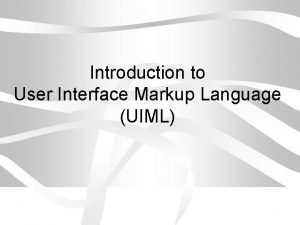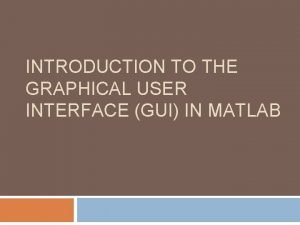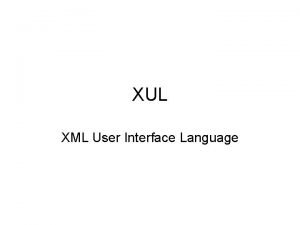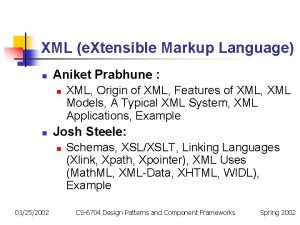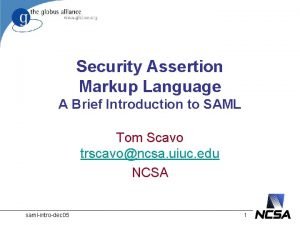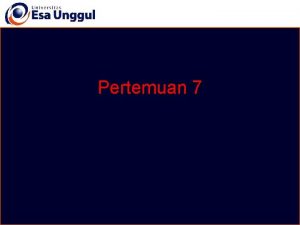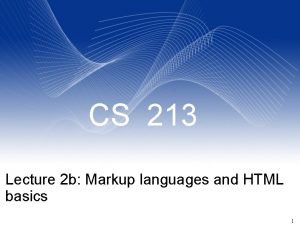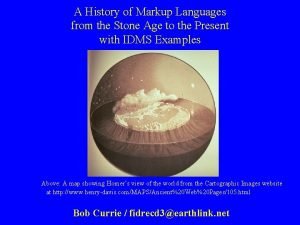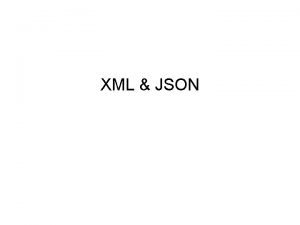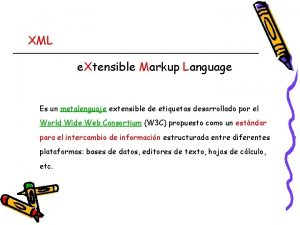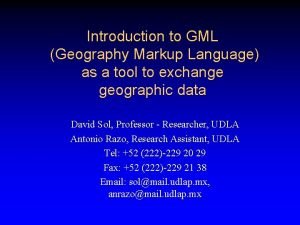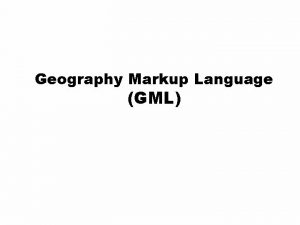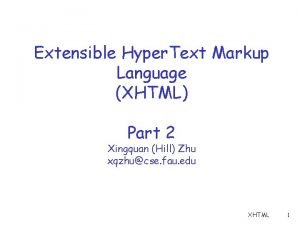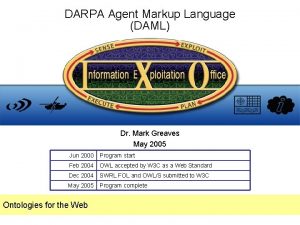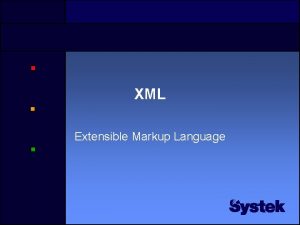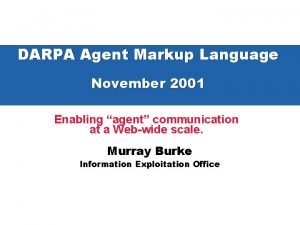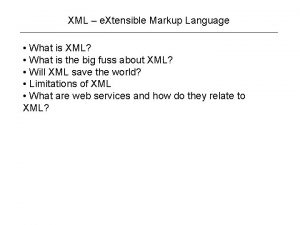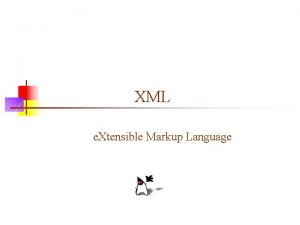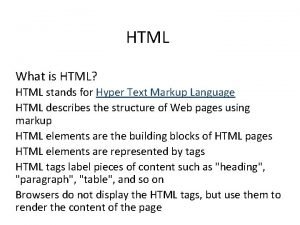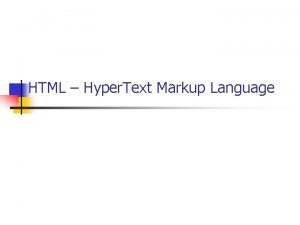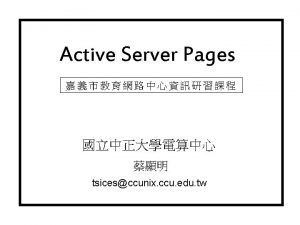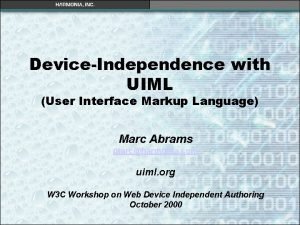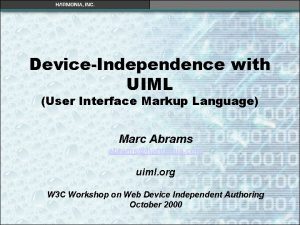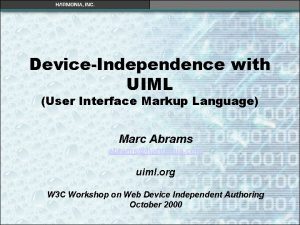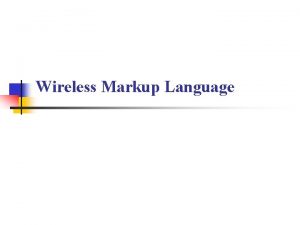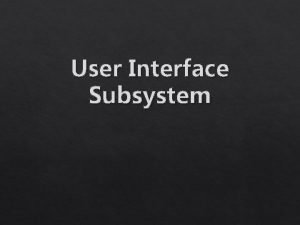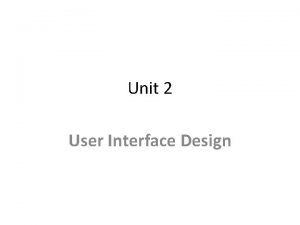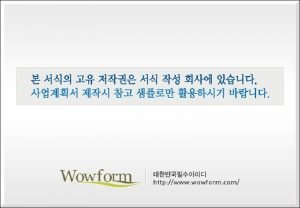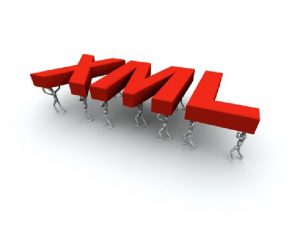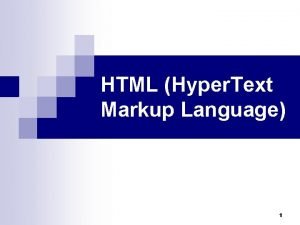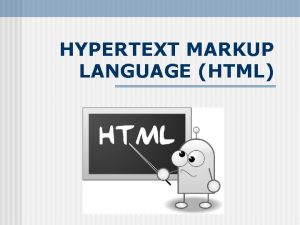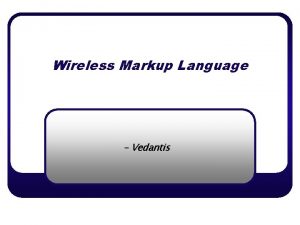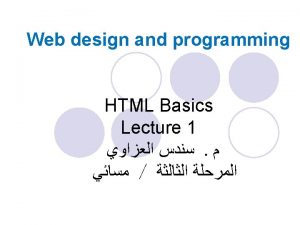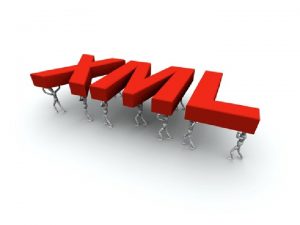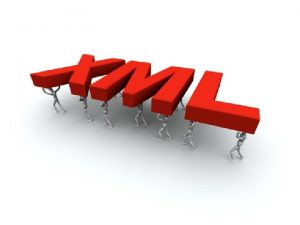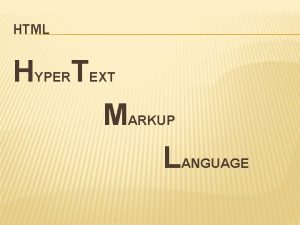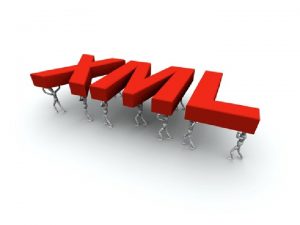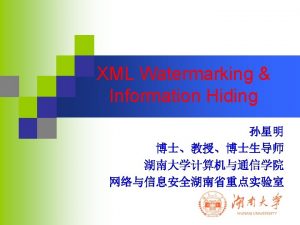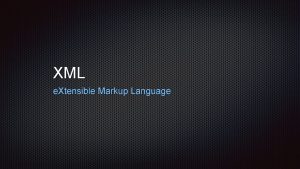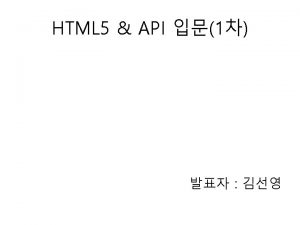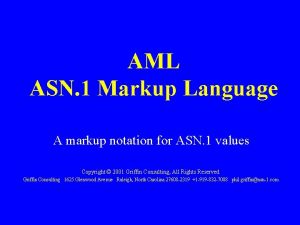Introduction to User Interface Markup Language UIML 1



























- Slides: 27

Introduction to User Interface Markup Language (UIML) 1

What is a Device? 2

A Scenario: A Hospital • Doctor • reviews schedule on office PC • makes rounds with handheld • checks patient status from voice phone • • Patient has relapse Info system locates device closest to doctor Text pager alerts message Doctor orders tests via smart phone 3

Problem: Tower of Babel Device variety + Platform = (Language & OS) variety Trouble ! 4

Troubles for Developers • Multiple source bases (WML, Java, C++, Speech. ML, XUL, . . . ) • Keeping UIs consistent across devices • Tracking changes in too many languages • Learning to use too many interface technologies (voice, handwriting, …) • Vendor risk 5

Trouble for System Admins • Need to install new releases of software for multiple devices 6

Perspective • Situation today is analogous to PC industry 20 years ago: – Many types of devices, many APIs – Eventually operating systems shielded developers from device-specific APIs • UIML provides similar shield for devices 7

Another Perspective Machine language Assembly language “High-level” language (C++, Java) Scripting languages Device-dependent markup Device-independent markup 8

UIML Objective Universal, device-independent language – Able to describe family of UIs – Maps language to devices via style sheets – Works even for devices not yet invented 9

Other UIML Objectives • Naturally separates UI from rest of application • Facilitates – rapid prototyping – accessibility – internationalization • Usable by non-programmers • Extensible 10

UIML has 5 Key Concepts. . . 11

Concept 1: UIML is a “Meta” Language • XML – Doesn’t define tags (<P>, …) – Must add doc type definition to make it useful – No need to change XML as new tag sets invented • UIML – – Doesn’t define tool-kit specific tags (<Menu>, …) Uses a few powerful tags (<part>, <property>, …) Must add toolkit peer definition to make it useful No need to change UIML as new devices invented 12

UIML’s Approach UI description: <part name=“Line” class=“Menu. Item. Or. Icon”> Style: <property class=”Menu. Item. Or. Icon" name="rendering” value="java. awt. Menu. Item” /> Events are handled similarly. 13

Concept 2: No Loss of Power Two approaches to cross-device language: • Least common denominator • Preserve full capability of each device (Each device UI is a different view into a rich backend application) 14

Concept 3: Specifying Any UI Answers 5 ? s. . . • • • Which UI elements present for device X? What presentation style for X? What words/sounds/images? What interface events? How to connect to backend? 15

UIML Skeleton <? xml version="1. 0". . . ? > <uiml version="2. 0 b"> <interface> UI description <structure name=“PC”>…</structure> <style>…</style> <content>…</content> <actions>…</actions> </interface> <logic>. . . </logic> <toolkit-peers> </uiml> UI/backend connection. . . </toolkit-peers> Map to Java, etc. 16

Concept 4: E volution of Event Handling Handle button-click in C++, VB code Handle it in scripting language Handle it declarative (in UIML itself) 17

Concept 5: UI = Elements + Style + Content • Facilitates internationalization: – Note that you didn’t see text for menuitem yet – Text for menu tag is in <data> section. – Multiple texts for multiple languages • Helps expert/novice UI problem 18

Credits UIML is an evolution from lots of good ideas: • • HTML/CSS/XSL separation of style UI management systems from HCI community The “X” in XML. . . 19

To learn more. . . • uiml. org: tutorial, spec, Java renderer source code • Try it! Downloadable Java renderer • In progress: – Speech. ML, Win. CE subset renderers – Dynamic interface server 20

21

Family of Interfaces 22

Rapid Prototyping Example • One UI definition • Two presentation styles 23

24

No Scripting or Java code for Events. . . 25

26

27
 Ui markup language
Ui markup language Function of graphical user interface
Function of graphical user interface What is xul
What is xul Language
Language Security assertion markup language definition
Security assertion markup language definition Wireless markup language
Wireless markup language Markup language examples
Markup language examples Clainlist
Clainlist Json xml alternatives
Json xml alternatives Lightweight markup language
Lightweight markup language Tecnica de la entrevista
Tecnica de la entrevista Gml geography markup language
Gml geography markup language What is gml
What is gml Extensible hypertext markup language
Extensible hypertext markup language Darpa agent markup language
Darpa agent markup language Xml dokument
Xml dokument Darpa agent markup language
Darpa agent markup language Xtensible markup language
Xtensible markup language Language
Language Introduction of html
Introduction of html Markup language
Markup language Graph markup language
Graph markup language Language
Language Bandwidth extensible markup language
Bandwidth extensible markup language What is interface in java
What is interface in java Abowd and beale framework example
Abowd and beale framework example Industrial interfaces
Industrial interfaces An interface
An interface
